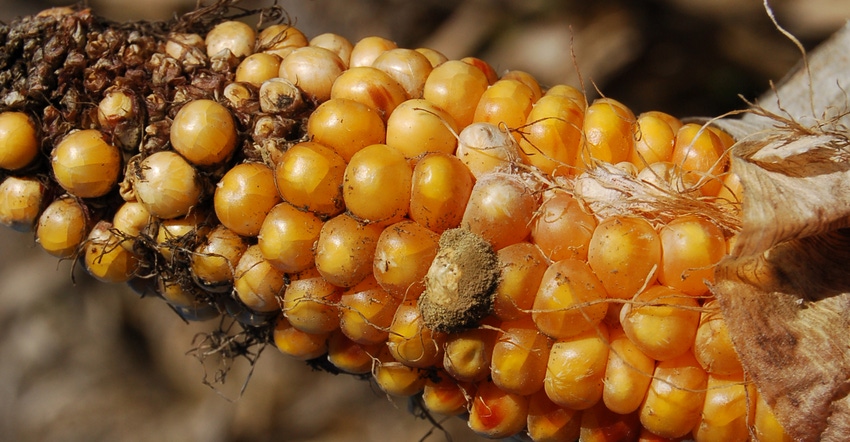
Expect to hear much more about biological control options in the future. A tremendous amount of investment capital poured into startups over the past decade, and established companies are also doing research. Some products are already on the market, with more coming soon.
“Biological products need to have science behind them, and not just marketed on someone’s opinion,” says Brooks Coetzee, a researcher with Corteva Agriscience. “The industry needs to move away from claims like ‘apply Product X and get a 7-bushel-per-acre yield bump.’ Instead, we need to point to the science behind how these products work and what benefits they can bring.”
Corteva expects Utrisha N to be available for growers for the 2022 season. It is a naturally occurring bacteria that enters plant leaves through stomata, colonizes within the plant and helps fix nitrogen from the air. Other products are in the company’s biological pipeline.
“Biological control is similar to control with traditional products, yet different,” Coetzee says. “Early adopters have seen advantages, but what’s going on isn’t always well understood. That’s why it’s important to rely on science in developing and marketing these products.”
When biological products are marketed and used correctly, they can be effective, more flexible, sustainable and more environmentally responsible, Coetzee says. They often work in a variety of crops, and may require fewer applications per season, especially in specialty crops.
“They work well with the Integrated Pest Management concept,” he explains. “You’re usually adding another mode of action, and biological controls may be more effective in staying under maximum residue levels, known as MRLs, in food and feed.”
Case study example
Coetzee points to a specific example of bringing science to biologicals and validating that a biocontrol option can work. It involves collecting lots of data and verifying what happens in the field.
AF-X1 is an integrated novel biofungicide that Corteva is developing for use in IPM systems. So far, it’s under test in Europe.
Aspergillus flavus is a fungus that can produce aflatoxin, a substance harmful to both animals and humans.
“What we’re doing is introducing a different strain of Aspergillus into the field environment,” Coetzee explains. “It’s naturally occurring, but this strain does not produce aflatoxin. The concept is that if this strain can outcompete the strain which produces aflatoxin, you will have much lower levels of aflatoxin in the grain or product in years when aflatoxin is normally a problem.”
Three years of testing in corn shows that by establishing AF-X1 in a field, 12 times less aflatoxin was produced.
“If it was a commercial operation, aflatoxin would have been low enough that the grower could have sold the corn,” Coetzee says. Aflatoxin levels were below the European Union’s stringent level set at 5 parts per billion.
Currently, researchers are determining which additional crops this approach should work with best, and when the biocontrol should be introduced during the season.
Read more about:
BiologicalsAbout the Author(s)
You May Also Like




